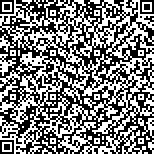|
|
| |
|
|
| 本文已被:浏览 237次 下载 232次 |

码上扫一扫! |
|
|
| LED光谱对许氏平鲉视网膜形态的影响 |
|
吴燕玲1,2, 孙飞1,2, 蔡皓玮1,2, 李鑫1,2, 刘鹰1,3, 刘松涛1,2, 马贺1,2
|
|
1.设施渔业教育部重点实验室(大连海洋大学), 辽宁 大连 116023;2.大连海洋大学海洋科技与环境学院, 辽宁 大连 116023;3.浙江大学生物系统工程与食品科学学院, 浙江 杭州 310058
|
|
| 摘要: |
| 光作为一个复杂的环境因子, 对鱼类的存活、摄食、生长及视觉均产重要影响。为了探究LED光谱对许氏平鲉(Sebastods schlegelii)视网膜结构和视网膜各层细胞数目与厚度的影响, 本文选取1 000尾许氏平鲉幼鱼(体质量为38.80±0.43 g、体长为10.20±0.17 cm)分别养殖在5种光谱下(蓝光(λ450 nm)、绿光(λ525 nm)、黄光(λ590 nm)、白光(λ460 nm)、红光(λ 630 nm)), 其中白光组为对照组, 其余4组为处理组。经过为期60 d的处理后, 分别对各组的视网膜进行取样观察。结果表明: 不同的LED光谱对许氏平鲉的视网膜结构未产生影响, 但各个光谱下视网膜细胞数目略有差别, 在5种不同光谱条件下, 在单位面积(100 μm×100 μm)内, 蓝光组内网层细胞数量(24.33±2.08)显著低于白光组(P<0.05);红光组外核层细胞数量(33.33±3.51)显著低于除白光组外的其他各组(P<0.05),通过对比各个光谱下视网膜各层细胞数量可得, 蓝光组与红光组数量最少, 其他各层差异不大。综上所述, 饲养于不同光谱处理组的许氏平鲉幼鱼的视网膜的厚度及细胞数量均会发生适应性改变, 以帮助其更好地适应外界光环境的变化。本研究为揭示许氏平鲉对光环境的适应变化规律提供了理论基础, 并对许氏平鲉养殖光照条件设置提供一定的理论参考。 |
| 关键词: 许氏平鲉(Sebastods schlegelii) LED光谱 视网膜结构 视网膜厚度 视网膜细胞数目 |
| DOI:10.11759/hykx20221124002 |
| 分类号:S966.9 |
| 基金项目:国家自然科学基金项目(32202961); 辽宁省科学技术计划资助项目(2021JH2/10200011);教育部重点实验室开放课题资助项目(202202); 大连市领军人才资助项目(2019RD12); 国家贝类产业技术体系岗位科学家项目(CARS-49) |
|
| Effect of the LED spectrum on retinal morphology of Sebastes schlegelii |
|
WU Yan-ling1,2, SUN Fei1,2, CAI Hao-wei1,2, LI Xin1,2, LIU Ying1,3, LIU Song-tao1,2, MA He1,2
|
|
1.Key Laboratory of Environment Controlled Aquaculture (KLECA), Dalian 116023, China;2.College of Marine Technology and Environment, Dalian Ocean University, Dalian 116023, China;3.College of Biosystems Engineering and Food Science, Zhejiang University, Hangzhou 310058, China
|
| Abstract: |
| Light is a complex environmental factor that significantly affects the survival, feeding, growth, and visual perception of fish. To investigate the effects of Light Emitting Diode (LED) spectra on the retinal structure and the number and thickness of the cells in each retinal layer of Sebastods schlegelii, 1, 000 S. schlegelii juveniles (body mass 38.80±0.43 g, body length 10.20±0.17 cm) were cultured in five spectral treatment groups: blue light (λ450 nm), green light (λ525 nm), yellow light (λ590 nm), white light (λ460 nm), red light (λ630 nm), green light (λ525 nm), yellow light (λ590 nm), white light (λ460 nm), and red light (λ630 nm). The white light group was the control group, and the other four groups were the treatment groups. After 60 days of treatment, samples were taken from the retinas of each group for observation. The results showed that the different LED spectra did not affect the retinal structure of S. schlegelii, but the number of retinal cells noted after treatment under each spectrum was slightly different. Under the five different spectral conditions, the number of cells in the inner retinal layer in the blue light group (24.33±2.08) was significantly lower per unit area (100 μm × 100 μm) than that in the white light group (P<0.05); the number of cells in the outer nuclear layer was significantly lower in the red light group (33.33±3.51) than that in all of the other groups except the white light group (P<0.05). The number of cells in the outer nuclear layer of the red light group (33.33±3.51) was significantly lower than that in all of the other groups except the white light group (P<0.05). A comparison of the number of cells in each retinal layer of each spectrum showed that the blue light group had the lowest number along with the red light group, and the differences between the other layers were not significant. In summary, the retinal thickness and cell number of S. schlegelii juveniles maintained in different spectral treatment groups underwent adaptive changes in response to changes in the external light environment. This study provides a theoretical basis for revealing the adaptive changes of S. schlegelii to a lighted environment and provides a theoretical reference for setting the lighting conditions for culturing S. schlegelii juveniles. |
| Key words: Sebastes schlegelii LED spectrum retinal strcture retinal thickness number of retinal cells |
|
|
|
|
|
|
